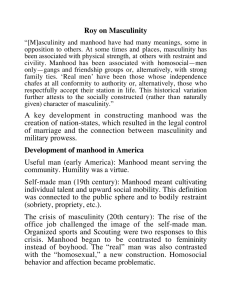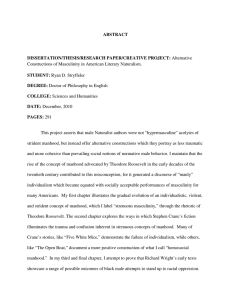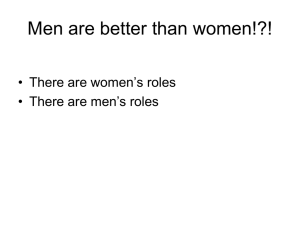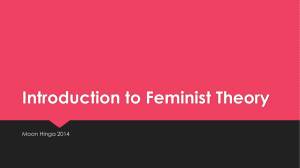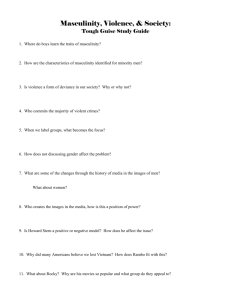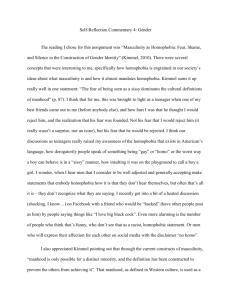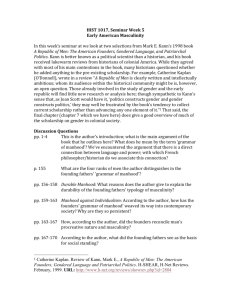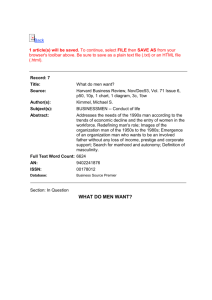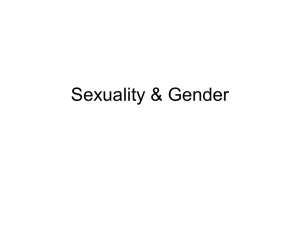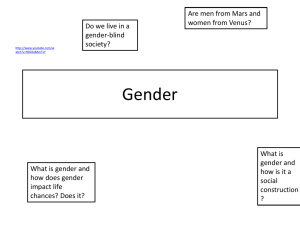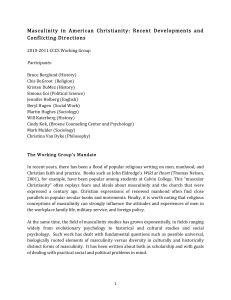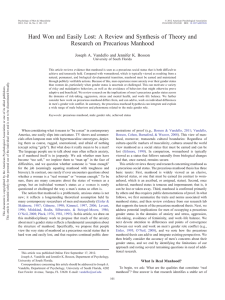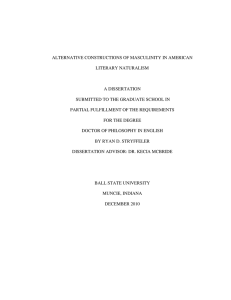Roy on Masculinity
advertisement
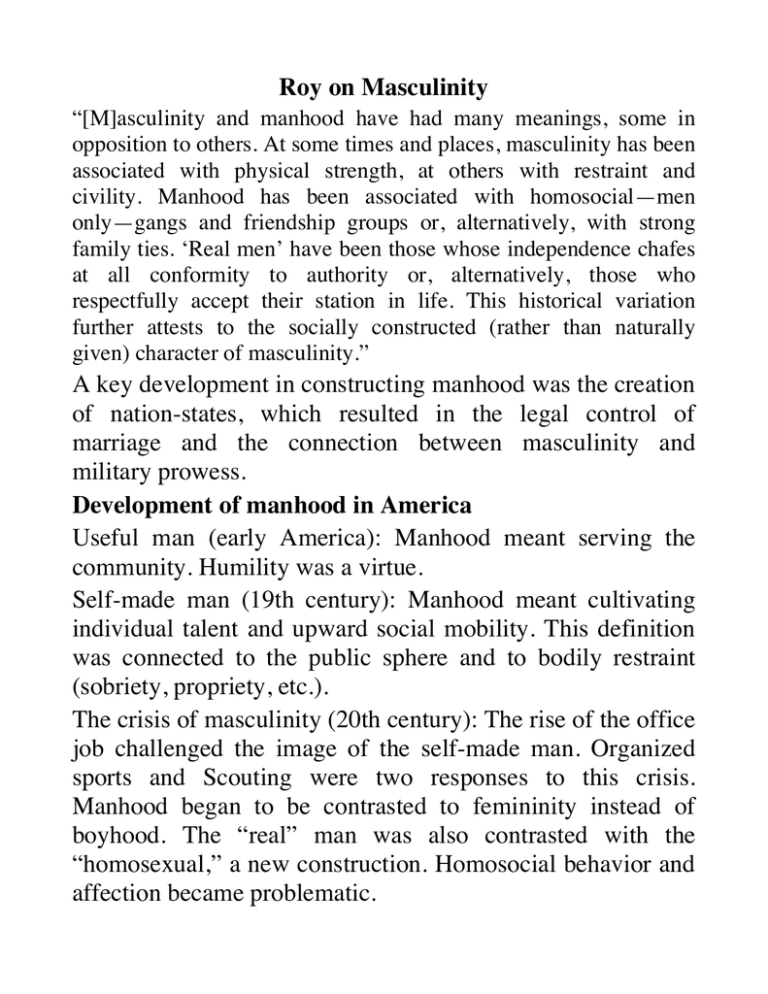
Roy on Masculinity “[M]asculinity and manhood have had many meanings, some in opposition to others. At some times and places, masculinity has been associated with physical strength, at others with restraint and civility. Manhood has been associated with homosocial—men only—gangs and friendship groups or, alternatively, with strong family ties. ‘Real men’ have been those whose independence chafes at all conformity to authority or, alternatively, those who respectfully accept their station in life. This historical variation further attests to the socially constructed (rather than naturally given) character of masculinity.” A key development in constructing manhood was the creation of nation-states, which resulted in the legal control of marriage and the connection between masculinity and military prowess. Development of manhood in America Useful man (early America): Manhood meant serving the community. Humility was a virtue. Self-made man (19th century): Manhood meant cultivating individual talent and upward social mobility. This definition was connected to the public sphere and to bodily restraint (sobriety, propriety, etc.). The crisis of masculinity (20th century): The rise of the office job challenged the image of the self-made man. Organized sports and Scouting were two responses to this crisis. Manhood began to be contrasted to femininity instead of boyhood. The “real” man was also contrasted with the “homosexual,” a new construction. Homosocial behavior and affection became problematic. Johnson on Patriarchy Since we’re “stuck in a model of social life that views everything as beginning and ending with individuals,” we have trouble understanding how systems like patriarchy work apart of individual behavior and attitudes. “Patriarchy’s defining elements are its male-dominated, maleidentified, and male-centered character, but this is just the beginning. At it core, patriarchy is a set of symbols and ideas that make up a culture embodied by everything from the content of everyday conversation to literature and film. Patriarchal culture includes ideas about the nature of things, including men, women, and humanity… It’s about how social life is and how it’s supposed to be; about what’s expected of people and about how they feel. It’s about standards of feminine beauty and masculine toughness…. It’s about defining women and men as opposites, about the ‘naturalness’ of male aggression, competition, and dominance and of female caring, cooperation, and subordination. It’s about the valuing of masculinity and maleness and devaluing femininity and femaleness.…” “To live in a patriarchal culture is to learn what’s expected of us as men and women, the rules that regulate punishment and reward based on how we behave and appear.” Implications for understanding patriarchy: 1. Although people experience patriarchy as existing externally to them, we participate in it; we are of it and it is of us. 2. Patriarchy isn’t static; it is “an ongoing process that’s continuously shaped and reshaped.”
